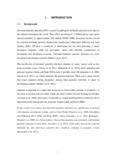Please use this identifier to cite or link to this item:
https://elibrary.tucl.edu.np/handle/123456789/1421| Title: | Intestinal Parasitic Association with Anaemia in Pregnant Women Attending Antenatal Clinic at Tribhuvan University Teaching Hospital |
| Authors: | Sapkota, Laxmi |
| Keywords: | Anemia;Pregnant Women;Developing countries;Diseases |
| Issue Date: | Dec-2015 |
| Publisher: | Central Department of Zoology Institute of Science & Technology Tribhuvan University Kirtipur, Kathmandu |
| Abstract: | Anaemia is the common problem during pregnancy in developing countries like Nepal. In order to find out the association between parasitic infection and anaemia in pregnant woman, a total of 200 fresh stool samples and their haemoglobin level data were collected from the pregnant women visiting TUTH. Stool samples were examined by using direct smear technique. The overall prevalence of intestinal parasitic infection and anaemic rate among pregnant women was found to be 35% and 50% respectively. Among 100 anaemic pregnant women 58 were infected with intestinal parasites. The association of anaemia with intestinal parasitic infection was statistically significant (P > 0.05). The most dominant parasite among anaemic pregnant women was A. lumbricoides followed by H.nana. Total five different types of intestinal parasites were identified in this study. Among them A. lumbricoides 61 (30.5%), H. nana 6 (3%), E. histolytica 5 (2.5%), T. trichiura 2 (1%) and S. stercoralis 2 (1%) respectively. Pregnant women with single parasitic infection were found to be 64 (32%) and multiple infection were 6 (3%). Intensity of parasitic infection found to be 17 (8.8%), 34 (17.0%) and 17 (9.5%) for light, moderate and heavy infection. Hand washing behaviour & working in field were significantly associated with IPI & anaemia, whereas use of open source of water and house sharing with domestic or pet animals was also found significantly associated with IPI. In conclusion, among five species of intestinal parasites A. lumbricoides was found to be associated with anaemia along with personal hygiene and sanitation as the major risk factors. |
| URI: | http://elibrary.tucl.edu.np/handle/123456789/1421 |
| Appears in Collections: | Zoology |
Files in This Item:
| File | Description | Size | Format | |
|---|---|---|---|---|
| final cover.pdf | 219.81 kB | Adobe PDF |  View/Open | |
| thesis.pdf | 654.55 kB | Adobe PDF |  View/Open |
Items in DSpace are protected by copyright, with all rights reserved, unless otherwise indicated.
